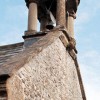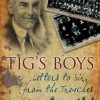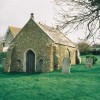Until the late 18th century Ansty was much as it is today, a quiet hamlet within the parish of Hilton but from then until the early years of the 20th century it was a place of industry. In 1777 Charles Hall, a young man just a quarter century in years, started brewing here on a commercial scale. The business continues to this day.
Charles Hall was baptised at Hilton on the 20th of December 1752, the son of William and Deborah Hall. He was a farmer’s son and he learnt about brewing from his father, who was known to do a little brewing to meet the needs of his family, his labourers and other villagers but Charles was a shrewd business man and saw the opportunity to put the family brewing on to a business footing while at the same time keeping an interest in farming.
Because he used the best equipment available the business flourished. Substantial government contracts were secured for the supply of beer to the military. This was a time when there were large numbers of troops stationed along the Dorset coast to allay fears of an invasion by the French during the Napoleonic wars.
On the death of Charles Hall the business was continued by his son Robert, who never married. However, he did adopt a grand-daughter of his father and this girl married George Edward Illingworth Woodhouse who had been Robert’s head brewer and who later became a partner in the business, which became known as Hall and Woodhouse. In 1875 George Woodhouse passed the business on to his two sons, George Edward Woodhouse and Alfred Charles Woodhouse. The business grew rapidly under their leadership and in 1882 they purchased the business of John Hector and Company of Blandford, who owned several licensed public houses. From this point the breweries at Ansty and Blandford were run as one business.
The beers were produced from barleys grown locally at Cheselbourne and Piddletrenthide; the hops came from Kent and water was taken from a spring on Melcombe Horsey Hill, supplemented by water pumped from the Devils Brook that ran through the brewery site.
At Ansty there was a large brew house, the first floor being used as a mashing room and copper-house. At one end, fixed on a gallery, was the malt hopper and mill, over which was the reservoir for storing the brewing water. On the side of this building back-heated by copper steam coils, was a hot-liquor tank. The mashing machine was the best available at the time. On the floor were two oak mash tuns both fitted with slotted gun-metal draining plates. A large copper holding fifty barrels stood near the mash-tuns; it was heated by fire to which the wort was delivered by a three –throw pump. Also in this room was an iron hop-back fitted with slotted iron draining plates and from here, by means of a two-throw pump, the wort was delivered to the open cooler. Under an adjoining room was a vertical refrigerator, cooling at the rate of thirty barrels an hour.
The hop store was located behind the malting house and held 600 pockets. Off the brew house was a fermenting room where there were eight fermenting tuns fitted with attemporators and chutes. Each of these held sixty barrels.
In 1856 a large vat house was built onto the fermenting house and this contained six vats made of oak, each holding 260 barrels and all used to store and mature old beers. Adjoining this was another vat cellar holding eleven vats and in front of this was the goods outwards stage. There was another vat cellar containing a further eight vats each containing 116 barrels and there was also a cask drying cellar with a cask-washing department, cooperage etc.
Brewing ceased at Ansty in the early 20th century, when brewing was transferred to the Blandford Brewery and Ansty became a distribution centre for the company. The malt houses remained in use until about 1940.
The company provided a lot of jobs locally: there were clerks, maltsters, coopers, barrel washers, an engine driver who doubled as a rat catcher, an Excise Officer, carters, pony boys, a mason, and a wheelwright; also on the payroll were stockmen and a shepherd. At one time the company employed twenty horses and had a number of carts, drays and other vehicles including a ‘tilted’ van and the brewery had its own fire engine.
Ansty has returned to being a peaceful hamlet where some of the old brewery buildings have been converted into houses, flats and a village hall, while the business, still family owned, continues and thrives at Blandford.



